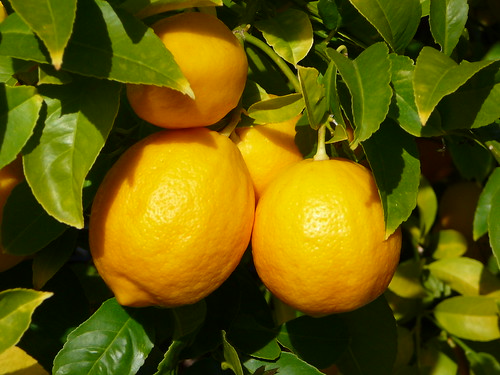In honor of this constant from basic chemistry (which was used so much between high school and college I plugged it into my graphing calculator as its own variable) and National Chemistry Week, we're sharing some of our favorite chemistry experiments today.
Instant Ice
Have you ever seen an entire bottle of water freeze instantly? This is easy to do, and makes a good demonstration and party trick.
Ingredients: An unopened bottle of spring water, a bucket, rock salt, ice, and a thermometer.
Directions: Fill the bucket ¾ full with ice and cover the ice with rock salt. Then put the bottle of water in the bucket and place the thermometer next to the bottle. Wait until the temperature of the bottle has been at about 17 degrees for about 10 minutes (if it gets too cold this won’t work). After this time, gently remove the bottle of water and twist open the top. All of the water will turn to ice as soon as the cap is removed.
This is an example of supercooling, which is when a liquid is cooled past its crystallization point without becoming solid.
Hot Ice
Instant Ice - Watch more Funny Videos
“Hot ice” (sodium acetate) is a liquid that turns into a warm solid when poured. It's cool to see, although you probably don’t want to consume it.
Ingredients: One cup of clear vinegar and 1 tablespoon of baking powder to make the sodium acetate.
Directions: Pour the vinegar into a saucepan and then slowly add the baking soda (if you do it too quickly you’ll end up with a volcano instead). Heat the mixture until a thin film forms on the surface, then remove from heat, transfer to a smooth, clean glass or bottle and cover immediately. If there are any crystals in the solution, add a small amount of vinegar to dissolve them. Cool the solution in the fridge.
When you take it out, pour it onto a dish and you'll see it turn into a solid. Heat will be released because crystallization is an exothermic process.
Sweet Hot Lemonade
 Image credit: Alasam
Image credit: AlasamIf you’re someone who has tried to sweeten lemonade with extra sugar and found that you can’t get it to dissolve, we have the solution to your problem. This recipe makes drinks that are sweeter than normal and perfect for warming up on a cool fall day.
Ingredients: Water and lemonade mix (you can also use Tang).
Directions: Boil the water on the stove and then add the drink mix to taste. You’ll find that you can add more mix than you would be able to with regular water.
What’s the science behind this? It is an example of supersaturation, which occurs when a change in the condition (in this case temperature) of a substance (water) enables it to hold more of a dissolved material (lemonade mix) than would be possible under normal conditions.
Experiment write-ups by Ilse.

No comments:
Post a Comment